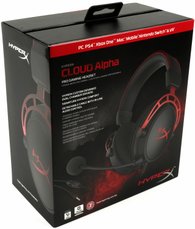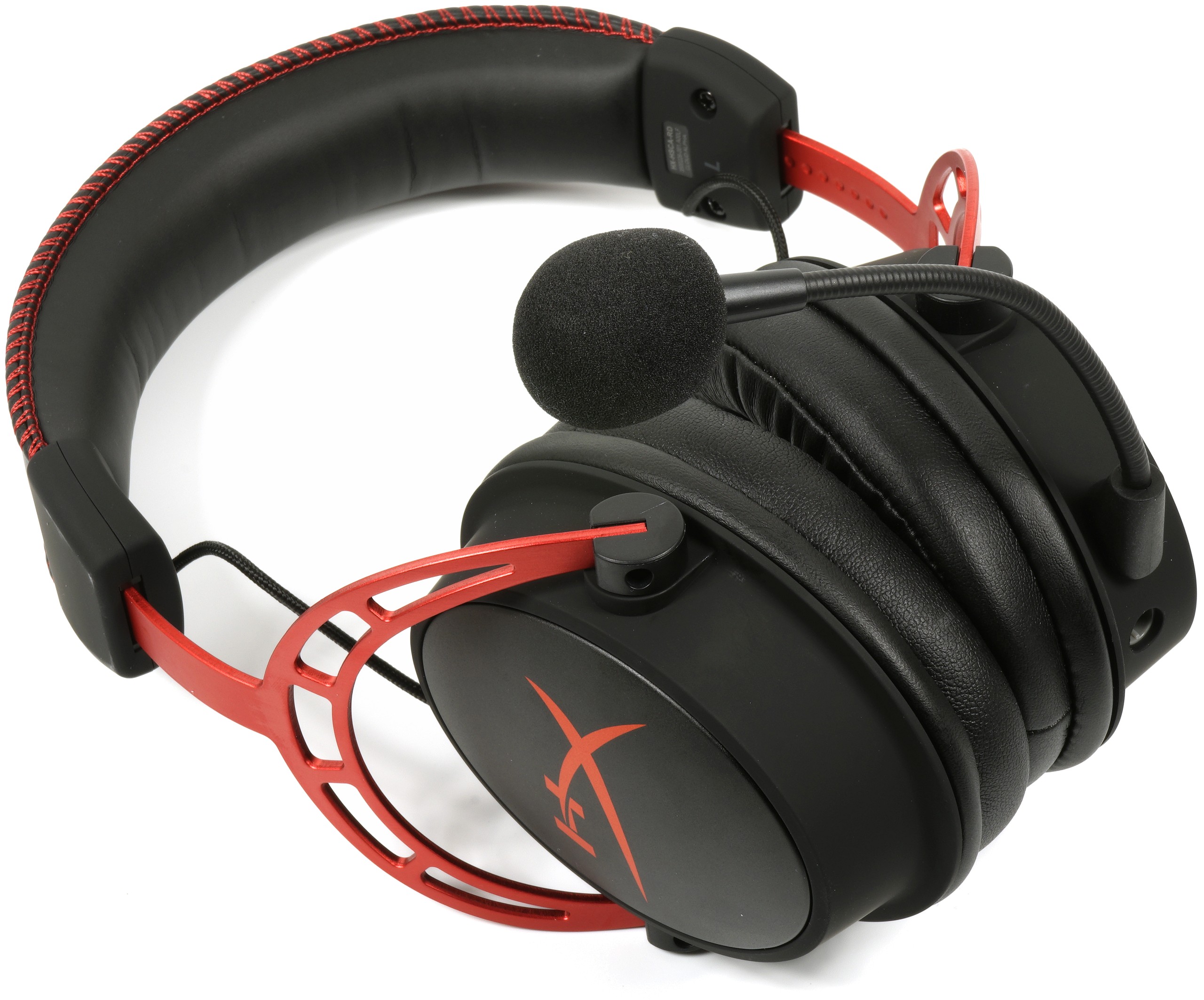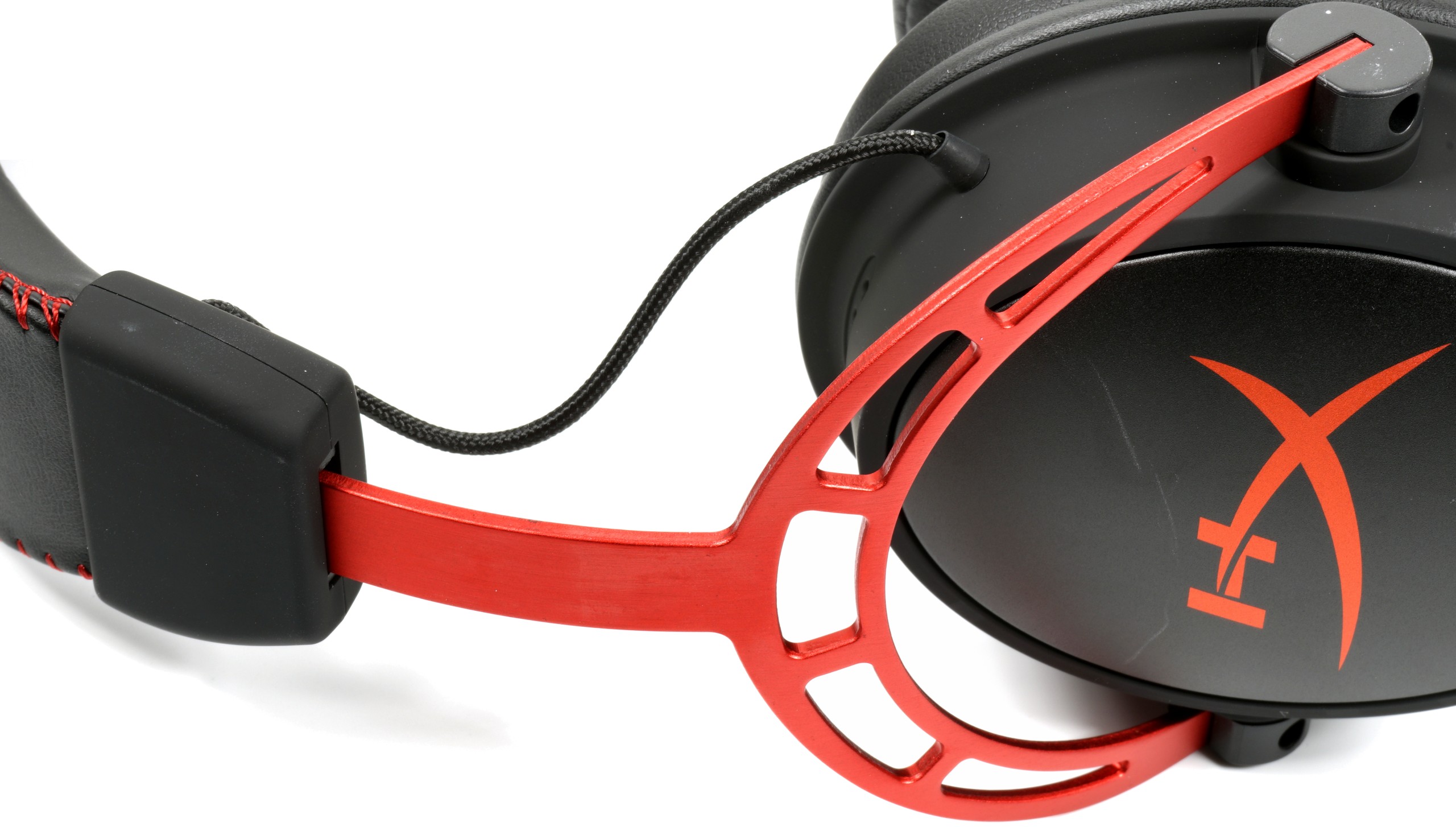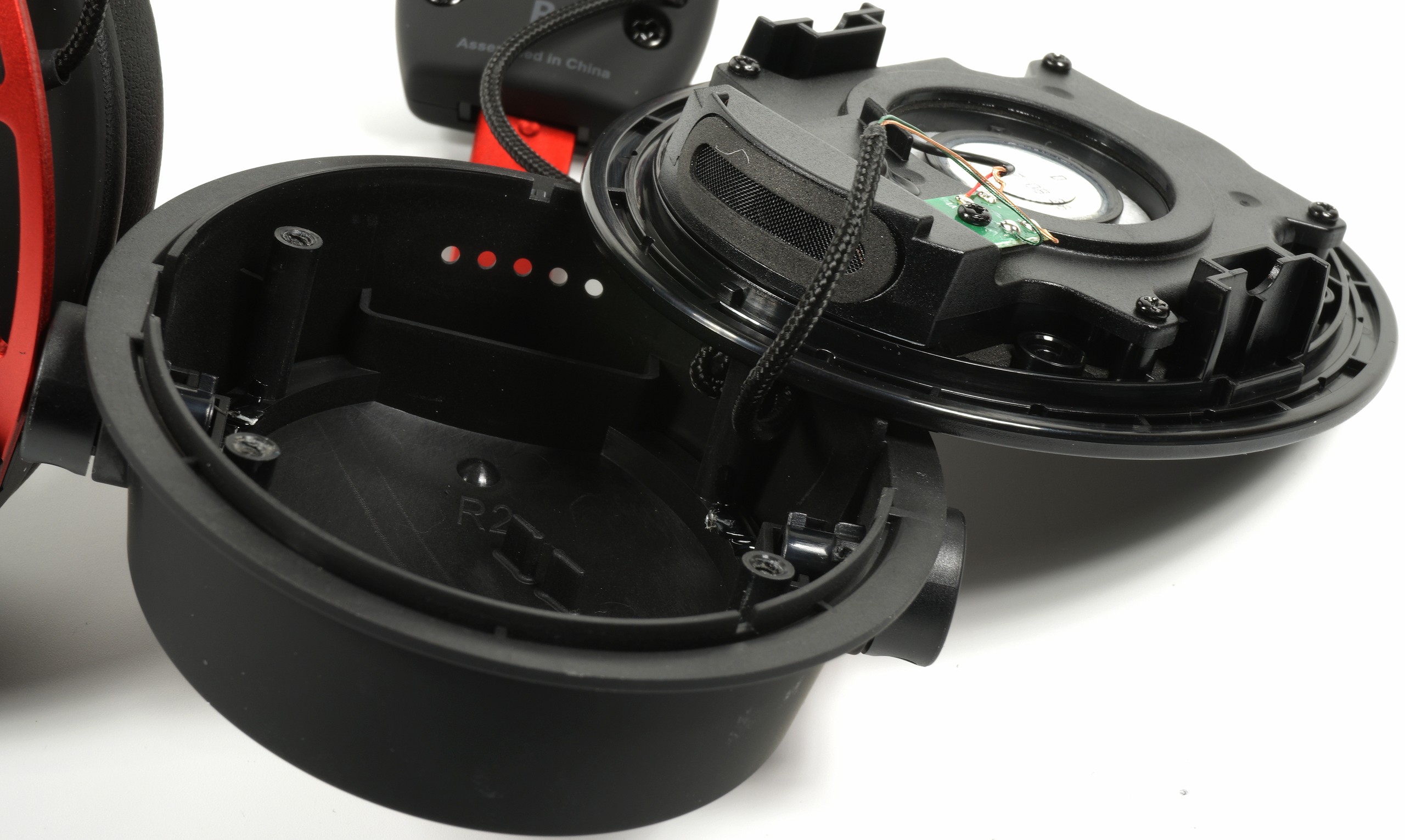 With the Kingston HyperX Cloud Alpha you would like to build on the successes of your predecessors and maybe make everything even a little better. But can this really succeed? We test the new headset with double-chamber technology in detail. The 100-euro class is fiercely competitive and that's where Kingston has priced the new headset. Surprised?
With the Kingston HyperX Cloud Alpha you would like to build on the successes of your predecessors and maybe make everything even a little better. But can this really succeed? We test the new headset with double-chamber technology in detail. The 100-euro class is fiercely competitive and that's where Kingston has priced the new headset. Surprised?
This technology is not new in itself, because those who know our tests have already seen some examples where the drivers once again sat in their own separate chamber and the manufacturers used various openings to show the resulting sound character. have influenced. We will of course disassemble the headset later as usual and go on a detailed search. Marketing or sound revolution? We will see (and then hear).
Unboxing and scope of delivery
The solid box contains the headset, a plug-in microphone, a 1.32m long connection cable with control unit and a combined 3.5mm jack connector for headphones and microphone, as well as a 2m long extension cable, which is also used as a splitter for separate 3.5mm jack plug for headphones and microphone.
The cast-in plugs or Sockets are each approx. 4 cm long, although we did not take their length into account in the measurements. The cable is relatively solid and textile-encased without appearing rigid. All this is completed by a carrying bag and the quick guide.

Optics, feel and comfort
Visually, the headset stands out due to its red metal bracket, the shells of the earcups are made of matt black ABS injection molding, as well as anthracite-colored light metal applications with the red HyperX logo, each used on the backs. Visually, all this is quite coherent and apart from the coloured accent of the temple and logo, the headset looks rather solid and of higher quality. Kingston has thankfully dispensed with a cheap effect-hating and the obligatory LED garlands.
 |
 |
Overall, the processing looks quite high quality and thus exceeds the similarly expensive Roccat Khan Pro, which we had recently tested. At just under 300 grams, the headset is not an ultra-light aircraft without the cables, but it is also not a heavyweight that crushes the soul.
 |
 |
The adjustment of the headband and the necessary mechanism are time-tested. Pulling out and pushing in are accompanied by a tactile feeling for the individual steps. The possibility of variation is sufficiently dimensioned and the resulting fit is therefore a real benefit for both very small and very large heads.

The joint mechanism only relies on one axis, so the flexibility of the headband must ensure the necessary adjustment around the vertical axis. In fact, this works quite well in practice. Of course, one can argue whether another joint such as e.g. would have been better at Roccat Khan Pro. But anything that is not in it cannot be broken. And so you are certainly no worse operated with a metal bracket than with a plastic construction with a joint.

The very comfortable and soft headband is well padded with foam in the middle and covered with pu imitation leather. The red quilted seams fit perfectly with the overall optical concept.

The removable ear pads use the same material and are also suitable for long-term use. The quilted seam at the outer edge also ensures that wrinkles on the outside of the fabric are avoided, so that the cushions always finish sufficiently and neatly. These are small things that not every manufacturer pays attention to. The textile inner covering is wrinkle-free and thin enough not to negatively affect the sound. We will come back to the acoustic characteristics of the ear pads later.
 |
 |
Functionality
The HyperX Cloud Alpha is wired and therefore has a control unit with volume control and a slide switch for the mute function of the microphone. The wheel of the volume control is grippy and intuitively accessible, but the Mute switch requires some getting used to.

The cables, like the microphone, are completely removable. However, the plugs not only sit very tightly, but you also need plenty of power to plug them in until the stop. Those who do not have the courage to develop their strength will not hear anything at first.
Tear Down and Sounding
Let us finally return to the double-chamber principle that has already been announced. Many manufacturers already use similar concepts, but Kingston has made some modifications and changes. At the top of the earcups you will find small openings, which could be thought of as a kind of pressure equalization. However, the system inside is more sophisticated than it might look at first glance. That's why we simply screw up the earcup once.

If we now look at the removed upper shell with the drivers, then we see very nicely that this chamber responsible for the basses also has a specially shaped opening at this point. This is not directly the usual resonator for loudspeakers, but experiments with this opening have shown that if the bass is glued off, the bass disappears almost completely. The outer openings also have a very clear influence on the bass and its character.

While the heights are radiated from the membrane of the 50 mm neodymium drivers directly to the ear, the rear opening below the drivers serves above all for the very good modeling of the lower mids and mids, which ensures a rather warm sound character. A test attenuation of the large cavity in the shell, on the other hand, makes the headphones sound colder, which would certainly not have been everyone's taste.
 |
 |
Whether the 65 Ohm impedance is a good thing, everyone has to make up for themselves, because especially for use on mobile devices such as smartphones, many manufacturers are more likely to bet on 32 and even only 16 ohms to increase the achievable volume levels. On the other hand, the achieved performance on a Google Pixel 2 XL is also sufficient for a veritable hearing damage, if one celebrates it as a permanent sound system.
Microphone
The very flexible gooseneck microphone is long enough and has pop protection. The memory function for the once set position is average. This connector is also richly tight and heavy-handed, but this is still better than an unintentional slipping out when headbanging. We come to the sound right away from the measurements.

Microphone measurement and sound check
First, we measure the real frequency range of the microphone to meet readers' feedback. For this we use our measuring room again, but we virtually reverse the process. Of course, a true reciprocity calibration as a starting point exceeds our current possibilities and the effort far exceeds the benefits. That is why we have sought a compromise.
However, since we have a calibrated measuring microphone, a comparison measurement and the calculation of the differences can at least produce a curve that is easily usable for our purpose. So it is not the exact frequency response of the microphone, we would not presume that, but a meaningful approximation, which also underpins our subjective impression.
Measuring and audible, it can be seen that it is under approx. 100 Hz gives a stronger level drop, but this could be even more pronounced. The raising of the lower middle and the upper bass make the voice appear rather warm and full. The extreme level difference of over 20 dB between 1 KHz and approx. 8 KHz modulates very dominant heights, which also sound metallic in the upper range. This is certainly not everyone's taste and does not come close to the quality of good table microphones. For this, the microphone is very level-proof.

Headphone measurement
As we test, we have already explained in the basic article "Gaming Headsets: Myth, Truth and How we Test" very detailed and transparent, because with the usual audio-swirl of bass thunderstorms and high-pitched whips you can't really get any further. You have to be able to listen subjectively well and measure at the same time. Let us start with the latter.
If you look at the curve, it looks up to the small dent at approx. 4.25 KHz and the peak at approx. 6 KHz with the corresponding edges in the flanks really well. You can't do it much better and we already see that it's not a bass bomber for acne plantation, but a very neutral and thoughtfully tuned headset. It is also very reminiscent of the older Creative Sound BlasterX H5 in its interpretation, but offers a more solid bass foundation.

We also played something with the low bass by raising it at 64 and 32 Hz. However, the level strength and also the transparency are then somewhat lost. You can do it, but you don't have to.
Subjective listening experience – Original against optimization
Let's also test subjectively what you have in the original on your ear. We used to operate the headset continuously for two days as usual at a source with a decent level, in order to give the one-game fanatics a chance.
Bass
Test the lowest bass in the subcontraoctave (16.4 Hz to 32.7 Hz) with a recording of Bach's Toccata and Fugue in D minor (19 and 25 Hz) and the Festival Overture 1812 by Tchaikovsky (10 Hz and 12.5 Hz). The same applies to the lower ranges of the contraoctothe (32.7 to 65.4 Hz). The big bass drum (kick drum), which in the U-music is a welcome companion and usually on approx. 55 to 60 Hz, this assessment will then be rounded off.
The bass is deep and very soft, but also more restrained than many competitors, yet always present. From approx. 40 Hz then it gets a little less pressing down, but that doesn't matter, because the low bass is always present and gets pleasantly to the point. The contraoctave is audible, but far from the earthquake. If, on the other hand, you like it dullly blubbering, you have to improve on the equalizer or buy a nasty bass bomber.
The large bass drum comes sufficiently crisp and the level strength is surprisingly high for this price range. The settling behavior is very good and overall it can be said that the bass does not make a solo appearance, but belongs to the sample students. So it fits.
The upper bass up to 150 Hz, in which also the Great Octave (65.4 to 130.8 Hz) is located, houses the basic language frequency of the male voice and decides very strongly on the true-to-life reproduction of male vocals.
This area sounds extremely coherent and surprisingly natural, but never analytical. The male vocals are reproduced rather warmly, but the instruments are hardly distorted into unpleasant. Overall, the resolution is almost outstanding and also allows not too dominantly playing single sources to perform well and also locate.
Frequency range
The lower middles (also basic tone range) are approx. 150 to 400 Hz. Together with the already mentioned upper bass, this area plays a very important role for the subjectively perceived heat or bass. Fullness of the sound. The basic language frequency of female voices can be found in this area.
Female vocals also get to the point well, warm and full. The timbre of the recorded instruments is also rather warm over this entire area. You can quite like it, because even smaller ensembles with classical instruments (e.g. at chamber concerts) sound almost too sympathetic. It's exactly the moment when you want to take off your jacket and imagine yourself in front of the open fireplace on a winter evening. We wouldn't have expected that.
The upper mids between 400 Hz and about two KHz contain a mark at a KHz, which is still considered a reference for many measurements. Unfortunately, this is often noticeable with cheaper devices, as manufacturers often try to overemphasize this frequency. This area does not play an insignificant role in gaming either, and balanced playback contributes significantly to good spatial resolution.
All instruments offer the required nuances and the resolution is almost perfect for this price range. Many details ensure a convincing performance and the proper stage, as well as the subjectively perceived quality of the spatial resolution are on a very good level. However, some headsets in the range above 100 euros and good hi-fi headphones can certainly offer even more, but that would be whining at a higher level.
An orchestra seems (purely subjectively) set up far enough, the location is quite precise. The headset can also be music, but not only. Because Mrs or Mr Gamer will certainly set other premises and then serve them quite well.
High-pitched range
Between two and about 3.5 KHz, human hearing is most sensitive, especially since this area of the lower heights is responsible for the good overtone reproduction of the human voice. This frequency range is crucial for the recognition of a voice or instrument; in this context, one also speaks of the respective timbre.
It still sounds natural and relatively neutral. Especially the location in the game is at the level of the action at all times. Sure, it might be even better (even), but there are significantly worse headsets for similar money. In the right relation, it fits really well. The music reproduction remains up to date, only some vocals lose a little expressiveness in the timbre. But even that is still well above the usual average.
The middle heights (3.5 to six KHz) decide on the sound or failure of the speech reproduction as a whole, because the S- and hissing (Sibilants) fall into this range. The upper heights then reach up to approx. ten KHz to move into the super high tone.
The small dent from the measuring curve continues here at the lower end, but it even becomes a certain peak with increasing frequencies. Anyone who knows the so-called "Beyer-Peak" of some headphones from Beyerdynamic will know what i mean. Some Sibilants come almost too dominant to the ear and suitable instruments push a little too much into the foreground. Over-stressed blow-out noises are not the lesser evil. You really have to like this interpretation, but it doesn't really detract from the good overall performance.

Summary and conclusion
 While the price point is well above the average of what many want to spend on a headset, it doesn't hurt so much that you would have to save years for such a product. The bar for material appearance, workmanship and sound is thus of course already reasonably high.
While the price point is well above the average of what many want to spend on a headset, it doesn't hurt so much that you would have to save years for such a product. The bar for material appearance, workmanship and sound is thus of course already reasonably high.
But that's where the Kingston HyperX Cloud Alpha scores really well. The material selection is appropriate for the price and Kingston relies not only on cheap plastics, but also on many details made of aluminium. The plastic used for the shells is fine and the ear pads and headband are soft, but not wobble or too tight.
Soundfully, it's a point landing for anyone looking for a headset with as natural playback as possible instead of a narrow-boiled bass bomber, which makes it easy to listen to music. This does not work badly with double-chamber technology, but it is not a revolution, but rather an evolution of existing solutions.
So from this point of view, everything in the green area and the award is also deserved. Sure, things would be much better, but then the wallet cries very quickly thick crocodile tears.
































Kommentieren